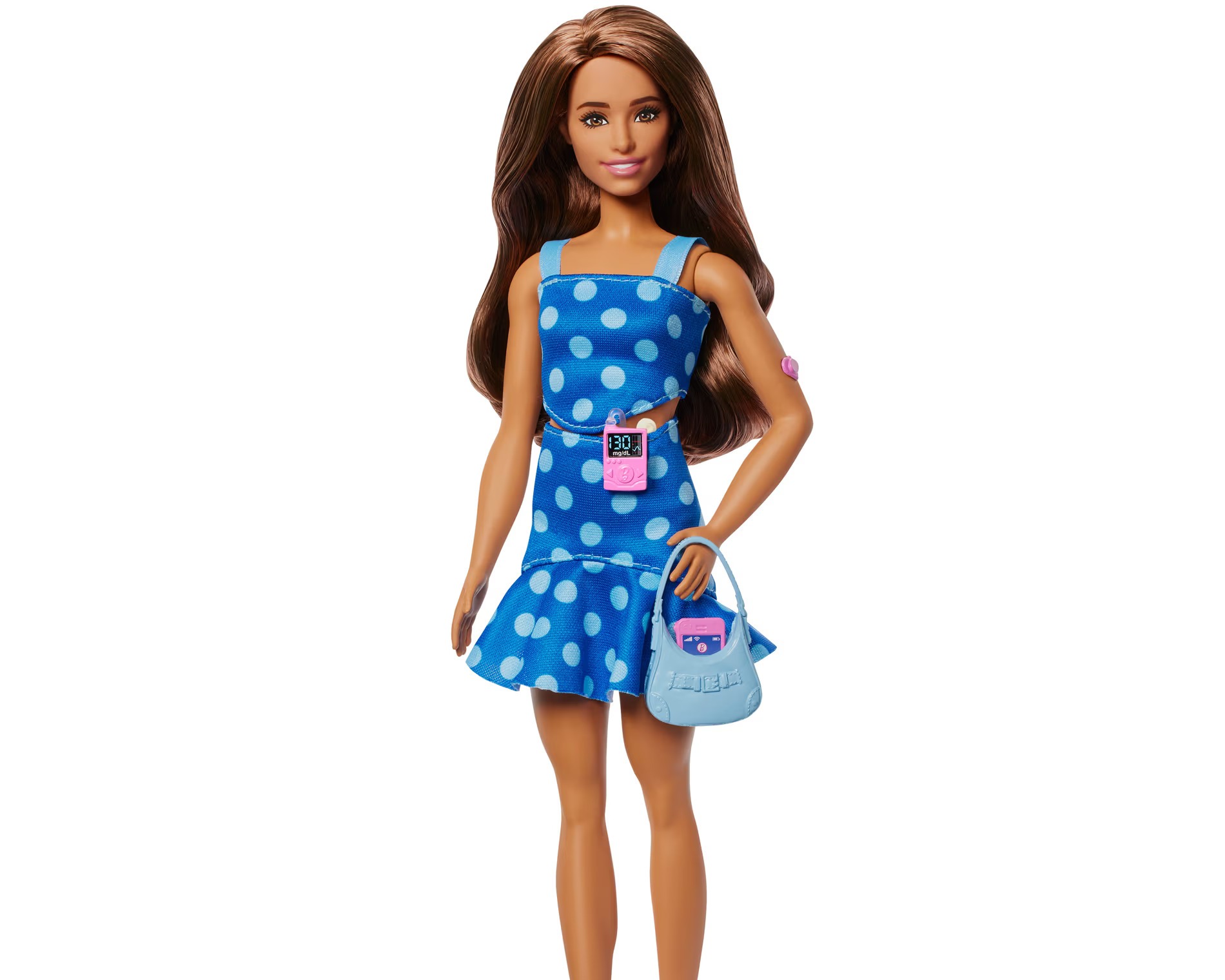
Barbie’s Type 1 Diabetes Doll: A Bold Leap in Representation
Inclusive Play Takes Center Stage
Mattel has released a new addition to its Barbie lineup: a doll created to represent children with type 1 diabetes. This launch signals a major shift in how inclusion is built into children’s toys. The Barbie type 1 diabetes doll comes with realistic medical accessories. It was developed in collaboration with Breakthrough T1D, a global nonprofit focused on this autoimmune condition.
Type 1 diabetes occurs when the body destroys insulin-producing cells in the pancreas. As a result, patients must monitor glucose levels and take insulin every day. The new Barbie reflects this reality. She wears a continuous glucose monitor (CGM) on her arm and carries a phone with a CGM tracking app. Additionally, she uses a pink insulin pump for automated insulin delivery. Her accessories also include heart-shaped medical tape and a small bag for essentials, such as snacks.
Representation Is Now a Design Principle
Krista Berger, Senior Vice-President of Barbie, said the doll marks “an important step in our commitment to inclusivity and representation.” Barbie has always shaped how children imagine the world. Now, it also helps them see themselves in it. The Barbie type 1 diabetes doll joins other inclusive dolls. These include Barbie with vitiligo, prosthetic limbs, and hearing aids.
Although Barbie dolls have existed since 1959, representation of physical disabilities is recent. Mattel only launched dolls with disabilities in 2019. Before that, diversity was mostly limited to skin tone and profession. Today, the Barbie Fashionistas range offers over 175 different dolls. They reflect a range of skin tones, eye colors, body types, and visible disabilities.
More Than a Toy—A Tool for Confidence
For children with type 1 diabetes, the condition is more than medical. It can affect their identity, social life, and confidence. Karen Addington, CEO of Breakthrough T1D UK, said the doll will serve as a “powerful role model.” She believes it will bring joy, recognition, and strength to children’s play. Likewise, Arjun Panesar of diabetes.co.uk called it a “positive step forward.” He emphasized how the doll helps reduce stigma and reminds children they’re not alone.
Other brands have also embraced inclusivity. Lottie offers dolls with Down’s syndrome and autism. Lego features characters with physical and non-visible disabilities. However, Barbie’s global reach gives its designs deeper cultural impact. When these designs reflect real conditions, they do more than entertain—they empower.
How can major brands maintain authentic inclusivity as they scale globally?
Explore Business Solutions from Uttkrist and our Partners’, Pipedrive CRM and more uttkrist.com/explore



